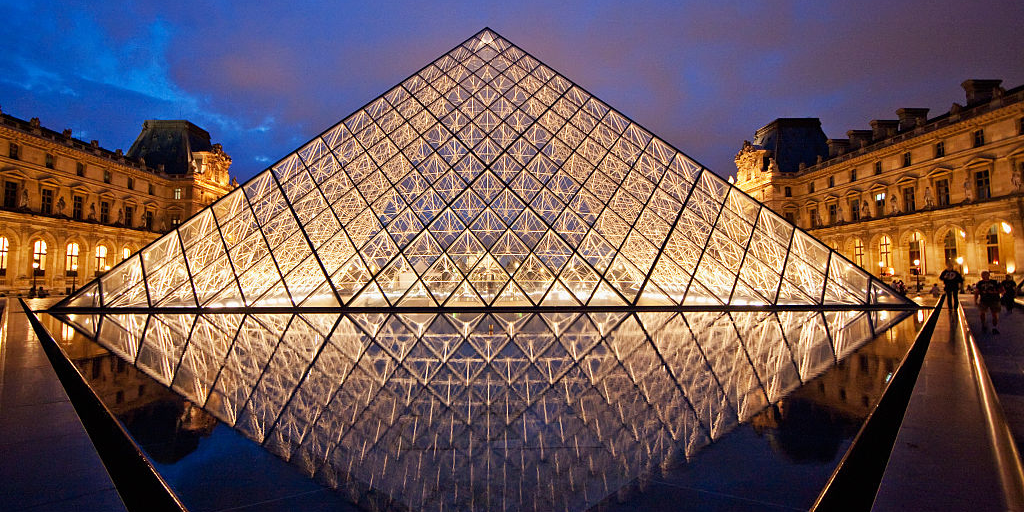Renowned architect I.M. Pei, best known for designing the iconic 71-foot glass pyramid that sits in the courtyard of the Louvre Museum, died on Thursday at the age of 102.
Pei’s legacy lives on through a notable body of work located around the world, which includes towering skyscrapers, mesmerizing spiral staircases, and peaceful reflective pools. The award-winning architect saw buildings not only as functional pieces of landscape, but also as a conduit for art to evoke human emotions.
“At one level my goal is simply to give people pleasure in being in a space and walking around it,” he once said. “But I also think architecture can reach a level where it influences people to want to do something more with their lives. That is the challenge that I find most interesting.”
Ieoh Ming Pei was raised in Shanghai but immigrated to the US in 1935 and studied at Massachusetts Institute of Technology. There, he refined his keen eye for design, citing the modern designs of Frank Lloyd Wright and Swiss-French architectural pioneer Le Corbusier.
Pei was later recruited by New York City real estate magnate William Zeckendorf, best known for developing much of the New York City skyline, before eventually establishing his own independent design firm, I. M. Pei & Associates, where he used his cultivated architectural knowledge to design breathtaking structures around the world.
Here are 28 photos which show some of Pei's most incredible designs.
Pei may be best known for his pyramid designs at the Louvre Museum in Paris.

The stunning structure stands 71-feet tall and has become one of the museum's most iconic features. It opened in 1988.

The Inverted Pyramid of the Caroussel du Louvre is also a notable feature inside the museum.

Though the Louvre's triangular feature has become one of Pei's best-known designs, it was initially not well-received.

Pei once described the first year and half of building the iconic structure as "hell."
"I would say the first year and a half was really hell," the architect said in a PBS documentary.
"I couldn't walk the streets of Paris without people walking looking at me and saying, 'There you go again. What are you doing here? What are you doing to us? What are you doing to our great Louvre?'"
Pei also designed the The John F. Kennedy Library and Museum, which was dedicated in 1979. The commission shot Pei into the national spotlight, though he was not entirely satisfied with the design.

Pei said he believed the project "failed."

"It should have been my best and most important project, but it was not," he said. "It's a sad story, and one of the few projects that have failed in my opinion. I lost the client."
His newfound stardom led him to design several more important landmarks, including the National Gallery of Art East Building in Washington, DC.

It features Pei's signature pyramids.

He designed the new wing of the the Suzhou Museum in China, a town where he spent many of his summers as a boy. It opened in 2006.



He designed the Rock and Roll Hall of Fame in Cleveland, Ohio.



And the Museum of Islamic Art in Doha, Qatar, which opened in 2008.



Pei designed a new wing at the Deutsches Historisches Museum, which opened in 2003.



He's also responsible for the John Hancock Tower in Boston, Massachusetts, which opened in 1976.

Pei took on designing the Bank of China Tower in Hong Kong to honor his father who served as a manager for the bank.


The Herbert F. Johnson Museum of Art at Cornell University in Ithaca, New York, was designed by Pei and completed in 1973.

He's also behind the design of the Musée d'Art Moderne Grand-Duc Jean in Luxembourg, which opened in 2006.



I.M. Pei also designed the Gateway Tower in Singapore, built in 1990.


